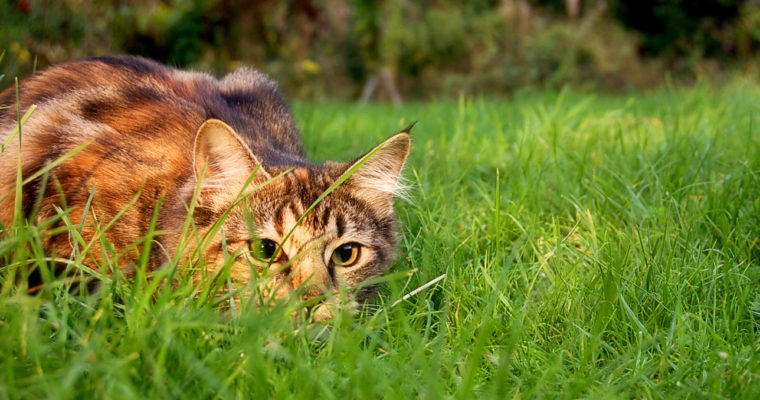How do you change public behaviour – for example, persuade cat owner’s to bring their pets inside? Is education the answer? Is education enough? If people just knew more about conservation issues would they become supporters and adopt conservation values themselves? Not necessarily. The reality is not everyone cares – and if they don’t care enough, no amount of information and education is going to change their point of view. So what do you do to engage the non-engaged?

Enter the social psychologist…
Social psychology is increasingly having a role to play in conservation as social scientists look at what matters to people, what influences their values and what is needed to bring about behavioural change. A brochure of predator statistics might be ignored – but if Jack’s mates or Jill’s neighbours are all into predator control, maybe Jack and Jill will give the idea some thought, maybe even give predator control a go.
The opposite is also true. Jo Bloggs might be well aware of the damage possums do and keen to control them on her own block. But if none of her neighbours are willing to do anything, she may resent the unfairness of bearing the burden alone or feel that her efforts will be futile, since next door’s possums will just cross the fence. If Jo feels that others are doing their fair share and her efforts will achieve something, she will be encouraged to join in too.
Understanding what motivates and what discourages people’s participation is a key part of engaging your wider community in your conservation effort. Conservation statistics may help, but you may also need to show how others are already doing their share, how individual effort will make a difference and how participation is something that will be valued by peer group and community.
Today’s Friday read looks at a couple of examples of research into attitudes and influences on behaviour. The topic in both cases is cats – and changing cat owner behaviour.
Cat owners know that cats hunt birds and other wildlife, but few are willing to keep their cats indoors on a permanent basis. Researchers from Victoria University of Wellington and Colorado State University looked at what drives cat-owner behaviour and what initial steps might be possible to improve the odds for native wildlife.
The first research project was based on a questionnaire distributed to zoo visitors and involved rating 24 brief statements and four behavioural-intention questions on a scale of 1-7. Answers were assessed to see to what degree factors such as attitudes, subjective norms, past cat owner behaviour, demographics and group membership explained intentions of those surveyed to bring cats inside.
The results showed that a belief in the benefit to the cat or the positive impact on the owner were strongly correlated with intention to bring cats inside, but there was only a weak correlation between bringing cats inside for the benefit of native species. For those who were already bringing their cat inside intermittently, veterinarians were found to be a key influence. Those who kept their cat outside exclusively were influenced by the belief that this was normal behaviour.
The researchers conclude with advice for future advocacy campaigns: “To increase the frequency of visitors bringing cats inside, future research should look at campaigns using veterinarians to advocate messages that emphasise the benefits to the cat of being inside or the positive impact on the owner. To target visitors who keep their cat outside exclusively, a normative campaign highlighting the actions of others bringing their cats inside at night may prove successful.”
The full article is published in Wildlife Research and is available for purchase:
What drives cat-owner behaviour? First steps towards limiting domestic-cat impacts on native wildlife (2015)
In a similar vein, a study in Colorado (a wildland-urban interface), surveyed 1397 residents by mail to examine public risk perceptions and attitudes towards outdoor pet cats. While feral and pet cats are a threat to wildlife around the world, the situation in Colorado differs from that in New Zealand in that cats themselves can be threatened by bigger predators in Colorado.
“Residents did not view all types of risks uniformly. They viewed risks of cat predation on wildlife and carnivore predation on cats as more likely than disease-related risks. Additionally, risk perceptions were related to attitudes, prior experiences with cats and cat–wildlife interactions, and cat-owner behavior.”
Again, the researchers advocated using cat-owners’ concern for their cats to influence behaviour and thus benefit native species: “Our findings suggest that changes in risk perceptions may result in behavior change. Therefore, knowledge of cat-related risk perceptions and attitudes could be used to develop communication programs aimed at promoting risk-aversive behaviors among cat owners and cat-management strategies that are acceptable to the public and that directly advance the conservation of native species.”
The full article is published in Conservation Biology and is available for purchase:
Understanding public perceptions of risk regarding outdoor pet cats to inform conservation action (2016)
The message would seem to be that quoting statistics on the number of birds killed by domestic cats each year is probably not going to lead to the majority of cat-owners keeping their pets inside. Quoting statistics on the number of cats injured or killed on roads, injured in fights etc might, however, help persuade at least some cat owners. Perhaps someone could research the total cost to New Zealanders in veterinary bills directly related to letting cats outdoors. Adding in the cost of flea treatments, worming etc – all less necessary for an indoor cat – could make quite an impressive total and might just have some influence. Who knows…

